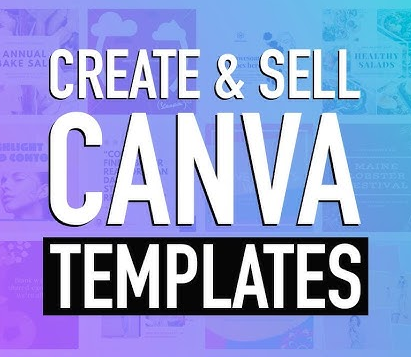It is now one of the most lucrative and easy-to-execute methods of earning passive income or creating a part-time creative enterprise, as of 2025, selling digital templates online. With businesses, solopreneurs, content creators, and educators alike going to digital products in order to automate their workflows, demand for good-looking templates is higher than ever.
Whether you are building templates for Notion, Canva, Excel, Google Docs, social media, websites, or resumes, the list of places to sell them is limitless. But where do you sell your digital templates to get in front of the right people and make the most money?
In this post, we will discover the top destinations to sell digital templates online in 2025 and some guidelines to select the best platform for your needs, audience, and niche.
Etsy: The Evergreen Marketplace
Ideal for: Creators, designers, new sellers, and specialty items.
Etsy is still among the best places to sell digital templates in 2025. With more than 96 million active customers, Etsy specializes in handmade and digital items, such as planners, social media packs, resumes, wedding invitations, and so much more.
Advantages:
Gigantic built-in traffic
You don’t have to create your own website
Beginner-friendly interface
SEO-friendly product pages
Strong brand and trust reputation
Disadvantages:
Competition, particularly for popular categories
Transaction fees and listing fees (approximately 6.5% + $0.20 per listing)
Strict seller policies and frequent algorithm changes
Pro Tip: Focus on keyword-rich titles and well-designed listing images to stand out.
Creative Market: For Designers by Designers
Best for: Professional designers, creatives with high-quality digital assets.
Creative Market has evolved into a high-end digital marketplace catering to design professionals. If you’re selling presentation templates, website themes, or branding kits, this is your place.
Pros:
High-paying customers
Quality over quantity
Great for branding and design-focused templates
Passive income potential
Cons:
Must sign up and get approved to be a seller
Less new-user friendly than Etsy
Higher standards of design expected
Pro Tip: Package your templates for greater perceived value and price point.
Gumroad: Creator-Friendly and Easy
Best for: Solo creators, influencers, and niche digital goods.
Gumroad remains a favorite in 2025, particularly among creators who wish for complete control without having to build a sophisticated store. Be you selling Notion templates or Excel dashboards, Gumroad is an excellent no-frills platform.
Advantages:
Simple to use
No initial costs – pay only when you sell something
Supports memberships and subscriptions
Easy checkout and email marketing functionality
Disadvantages:
No word-of-mouth traffic – you have to promote your own products
Limited storefront design
Limited control over customization except if you integrate with other software
Pro Tip: Utilize Gumroad if you have existing listeners on social media or email lists.
Payhip: Complete Storefront Without the Tech Pain
Ideal for: Budget-savvy creators and novices looking for a full-fledged storefront.
Payhip is developing rapidly as a competitor to Gumroad, providing complete online storefront with digital product delivery, VAT support, and marketing features—all with a free account.
Advantages:
Free plan available
Fully hosted store with pages to customize
Accepts subscriptions, courses, and memberships
Affiliate marketing built-in
Cons:
Similar to Gumroad, relies on self-promotion
Less brand recognition than Etsy or Creative Market
Pro Tip: Use Payhip if you need to sell a range of digital items in one location.
Notion Marketplaces (e.g., Notion Everything, Templify)
Ideal for: Notion creators and digitally selling products focused on productivity.
The success of Notion in 2025 has spawned niche marketplaces like Notion Everything and Templify, where customers actively look for productivity templates. If you’re creating templates for Notion, these niche sites can provide exposure that Etsy or Gumroad simply cannot.
Advantages:
Niche audience willing to purchase
Less competition than general marketplaces
Often high conversion rates
Disadvantages:
Restricted to Notion templates
Some charge revenue-sharing or require approval
Pro Tip: Leverage listings on Notion marketplaces with a private Gumroad or Payhip page for the most visibility.
Own Website using Shopify or WooCommerce
Best for: Experienced sellers who want ultimate control and brand establishment.
To scale up and have full control over pricing, branding, and customer experience, creating your own digital template store using Shopify or WooCommerce (WordPress) is the best option.
Pros:
Maximum control of your brand
No platform fees (only payment processing fees)
SEO, blogging, and email marketing integration
Long-term asset building
Cons:
Requires more setup and technical know-how
No built-in traffic – you’ll need a solid marketing strategy
Pro Tip: Invest in SEO and create free resources (like blog posts or lead magnets) to drive traffic to your site.
Social Media Marketplaces (Instagram, TikTok Shop, Pinterest)
Best for: Creators with a strong following or viral content.
In 2025, TikTok Shop and Instagram Shopping enable creators to send direct links to digital products. Although still on the rise, this approach is ideal for cosmetic-looking templates, particularly in niches such as beauty, fitness, productivity, and content creation.
Advantages:
Hit customers where they are already spending time
Viral shareability
One-click link to impulse buyers
Disadvantages:
Needs regular content creation
Algorithms constantly change
Limited file delivery options (must use outside checkout like Gumroad or Payhip)
Pro Tip: Utilize Linktree or Koji to curate several product links from your bio.

